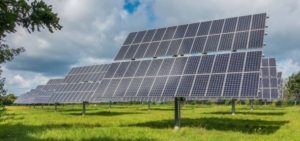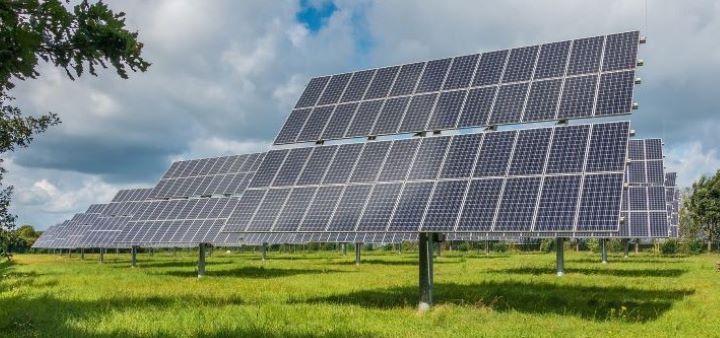Partner Content: Andrés Senouf from Temporis Capital discusses how the LGPS can use investments to generate a positive environmental impact alongside a financial return, while avoiding “green washing”.
 The Local Government Pension Scheme (LGPS) has been allocating significant capital to impact funds in the last two years. A large reason for investing in these funds is to contribute to local communities and to invest in the UK’s low-carbon transitioning. The zero-carbon emissions’ target of 2050 will require an immense amount of capital directed towards green energy generators and enabling technologies that will allow brand new green electrons to integrate/access the grid in the UK.
The Local Government Pension Scheme (LGPS) has been allocating significant capital to impact funds in the last two years. A large reason for investing in these funds is to contribute to local communities and to invest in the UK’s low-carbon transitioning. The zero-carbon emissions’ target of 2050 will require an immense amount of capital directed towards green energy generators and enabling technologies that will allow brand new green electrons to integrate/access the grid in the UK.
If we look closely at the quantum of capital required for renewable energy and green services in the shorter term, the numbers are staggering. To stay on track for its 2050 net-zero ambition, the UK will need to more than double renewable energy capacity, requiring £70bn* of investment in core wind and solar by 2030. This implies an investment of £4bn* in development equity to meet the 2030 renewable energy checkpoint. These numbers are likely to necessitate large investments from the LGPS if the UK is to stay on track towards net zero.
Room151’s LGPS Quarterly Webcast
February 23 2022
Online
Public sector delegates – register here
Green impact washing
The LGPS has been inundated with renewable energy fund offerings that are presented as impact funds. Unfortunately, projects that are already in construction or operating do not provide any additionality in the energy system and therefore do not contribute incremental new green electrons into the grid.
The concept of additionality is key to creating impact. Many funds dedicated to renewable energy invest more than 90% of their capital in low-risk infrastructure and/or into companies that do not provide additionality. These funds pretend to create impact, but, unfortunately, they are really only engaged in “green impact washing”.
We would make a case that these funds are basically recycling capital without providing new green energy generation or services. If most of the capital from the LGPS focuses on recycling the capital already invested, there is no way that there will be enough capital allocated in the UK to reach net-zero carbon emissions by 2050.
Green impact is not about generating low but steady yield from operating projects. Green impact in the energy system implies investing in early-stage development projects and in late-stage venture capital or growth-stage private equity of enabling technology companies. This creates new projects that will add green electrons to the grid and in critical technologies and infrastructure for the energy systems of the future.
Enabling technologies such as battery storage, interconnectors, and flexibility services are an absolute requirement to achieve the net-zero carbon ambition, and yet they rarely feature in offerings being shown to LGPS investors.
LGPS funds have taken the lead by investing in impact funds but are confronted with a wave of green impact washing. They need to consider the risk appetite necessary to invest in projects and companies that genuinely make an impact and find funds that appropriately blend true impact opportunities with an overall strategy focused on net zero.
Risk-return dynamics of impact funds
But can LGPS funds afford to take 100% venture capital and early-stage development risk in one fund? The risk implied in such investments is much higher than in an infrastructure fund invested mostly into operational assets. To deliver an acceptable risk profile, the manager needs to restrict the percentage of early-stage development assets and enabling technology investments. A combination of high-risk and low-risk investments that are appropriately balanced and diversified will create a portfolio that offers both attractive returns and an overall risk profile that is prudent for LGPS investors.
LGPS funds have taken the lead by investing in impact funds but are confronted with a large wave of green impact washing. They now need to consider the risk appetite necessary to invest in projects and companies that genuinely make an impact and find investment funds that appropriately blend true impact opportunities with an overall strategy focused on net zero. We observe that many LGPS allocators have a high level of comfort in taking early-stage development risk, but sizing that appetite correctly within the “impact” bucket of the scheme remains a challenge.
* Temporis Capital calculations based on National Grid ESO’s July 2020 Future Energy Scenarios capacity forecasts
Andrés Senouf is head of distribution at Temporis Capital.
—————
FREE monthly newsletters
Subscribe to Room151 Newsletters
Room151 Linkedin Community
Join here
Monthly Online Treasury Briefing
Sign up here with a .gov.uk email address
Room151 Webinars
Visit the Room151 channel














